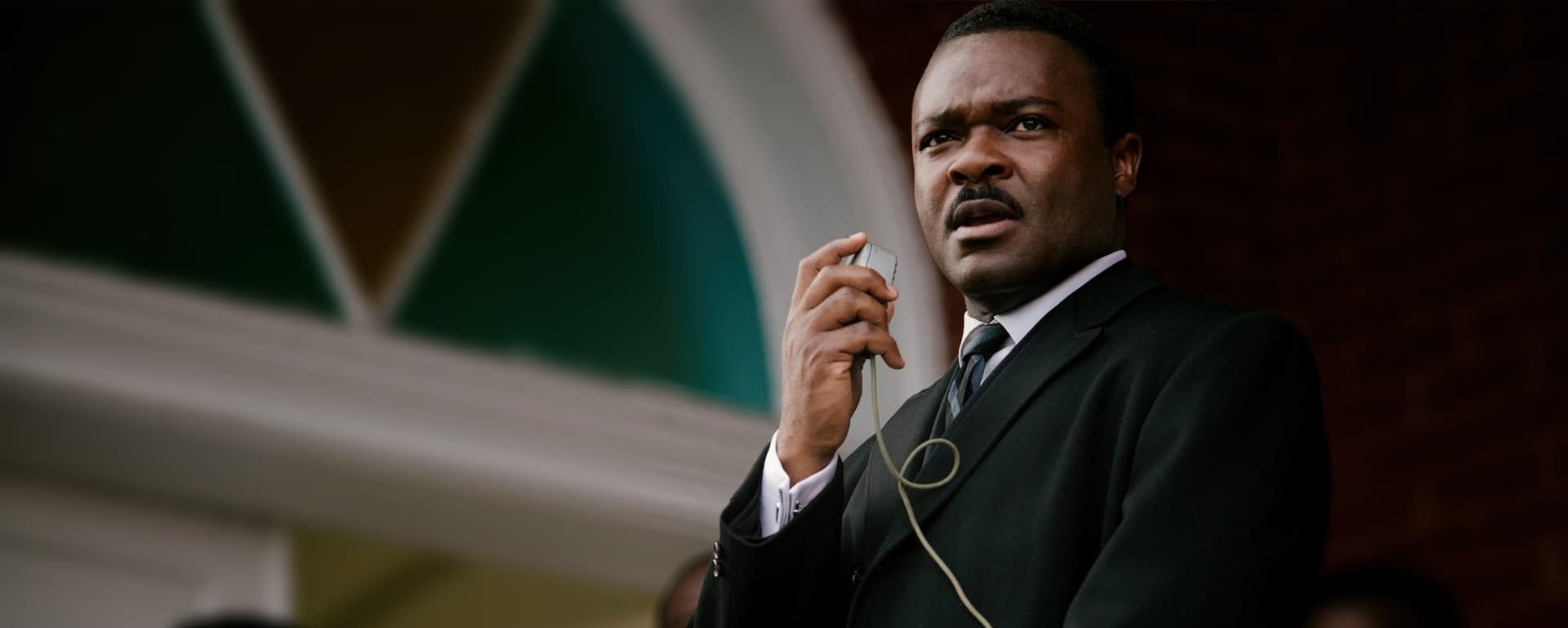Film Information
Genre(s):
Drama
Director(s):
Ava DuVernay
Year:
Curriculum links: This case study can be used for those studying 'American film since 2005: Section B: Comparative Study of Contemporary American Independent Cinema (post 2005) - Mainstream film’ on the WJEC AS/A-level specification. Other case studies for films included in this module on the WJEC A-Level Film Studies exam specification, include Frances Ha and Winter’s Bone.
Ava DuVernay’s Selma (2014) is a powerful historical drama based on the events of the Selma to Montgomery voting rights marches of 1965. The film dramatises these events through the lens of Dr. Martin Luther King and narrates the political and personal struggles that he and his community faced in order to use their activism to make meaningful change.
Selma was viewed on 5 December 2014 by two Compliance Officers. It was submitted without a category request. However, the film was not classified until 15 December 2014 because the film required further viewing by senior members of the BBFC before a decision could be reached. Although the original viewing team agreed that the film should be rated 12A, some of the classification issues, particularly the violence and racism, registered quite strongly and, the team recommended that the film be viewed again by Senior Examiners to confirm the proposed 12A age rating. After the film was seen again, the team confirmed the 12A rating for moderate violence, racist language and infrequent strong language.
Behind the classification
Racism is one of the key classification issues in the film. At 12A, our Classification Guidelines state that ‘Discriminatory language or behaviour must not be endorsed by the content as a whole. Such behaviour is unlikely to be acceptable if accompanied by violence, unless clearly condemned.’ In Selma, the issue of racism is clearly condemned by the narrative. However, there are several scenes which include aggressive uses of racist language (‘n****r’), as well as scenes of racially motivated violence.
While these scenes are distressing, and could potentially upset younger audiences, the issues are strongly contextualised within the historical and social context in which the film is set. The film also has meaningful messages and has particular merit for younger viewers who may be starting to engage with the history of the American Civil Rights Movement, or on issues of activism and anti-racism. As a result, we concluded that there were strong contextual mitigations to permit the racism at the 12A age rating.
The violence in Selma is similarly challenging because it is racially motivated and therefore registers more strongly than other types of violence. However, there is limited sight of blood and injury detail and the violence is contextually justified within the narrative as it reinforces the unjust crimes committed against the African American community. Consequently, it was acceptable at a 12A age rating.
Additionally, the strong language (‘f**k’) is infrequent and comfortably contained at the 12A level. Other issues include a scene in which Coretta Scott King plays her husband a tape that includes a recording of him having sex with another woman; sexual moaning can be heard, albeit briefly.
The process of referral that happened with Selma is not unique, particularly for films that are high profile, sit within the borders of particular age ratings, or raise novel or interesting policy issues. Such films may be viewed by multiple members of staff to ensure we arrive at the most appropriate age rating.
For further information about the film’s classification issues, read our content advice. If you want to find out more about how we rate discrimination in films, check out our handy Guide on the issue.
Discussion points
The film doesn’t shy away from the personal failings of Dr. King and depicting the impact his work has on his family life. Why do you think the director chose to highlight his personal struggles in the narrative? How does this inform your reading of Dr. King? What are the differences between his personal and public life?
In what ways do you think the issues raised in the film are relevant to today?
Can you see any similarities or differences between the Civil Rights Movement depicted in this film and the Black Lives Matter movement?
What techniques does the director use in the ‘Bloody Sunday’ sequence to reinforce the horrors of violence perpetrated against the peaceful protestors?
The film is rated 12(A). Do you agree with the age rating? Would you argue for a lower or higher age rating and if so, why?
Suggested Viewing
Malcom X (Spike Lee, 1992). 15
13th (Ava DuVernay, 2016). 15
Mandela: Long Walk to Freedom (Justin Chadwick, 2014). 12
